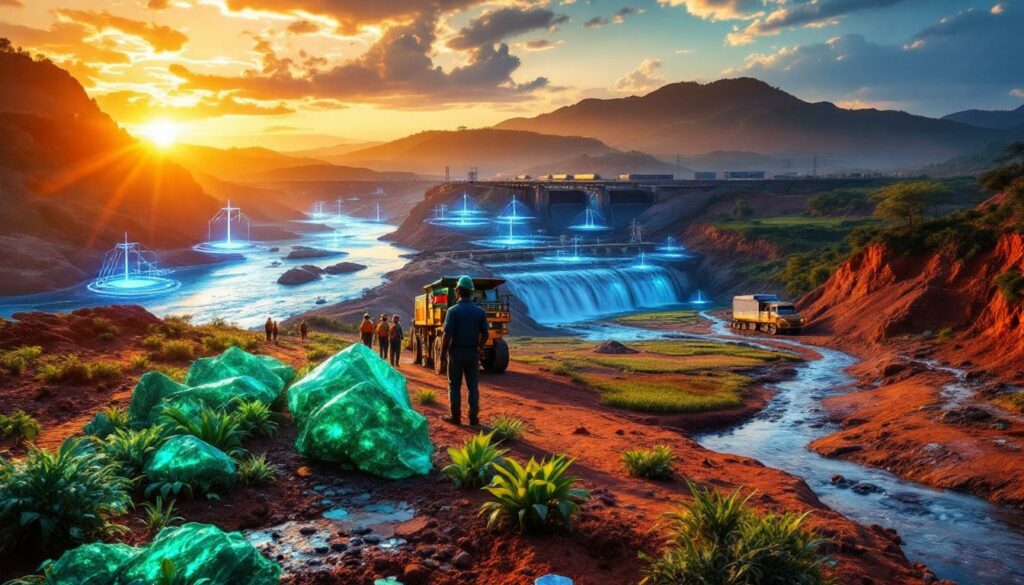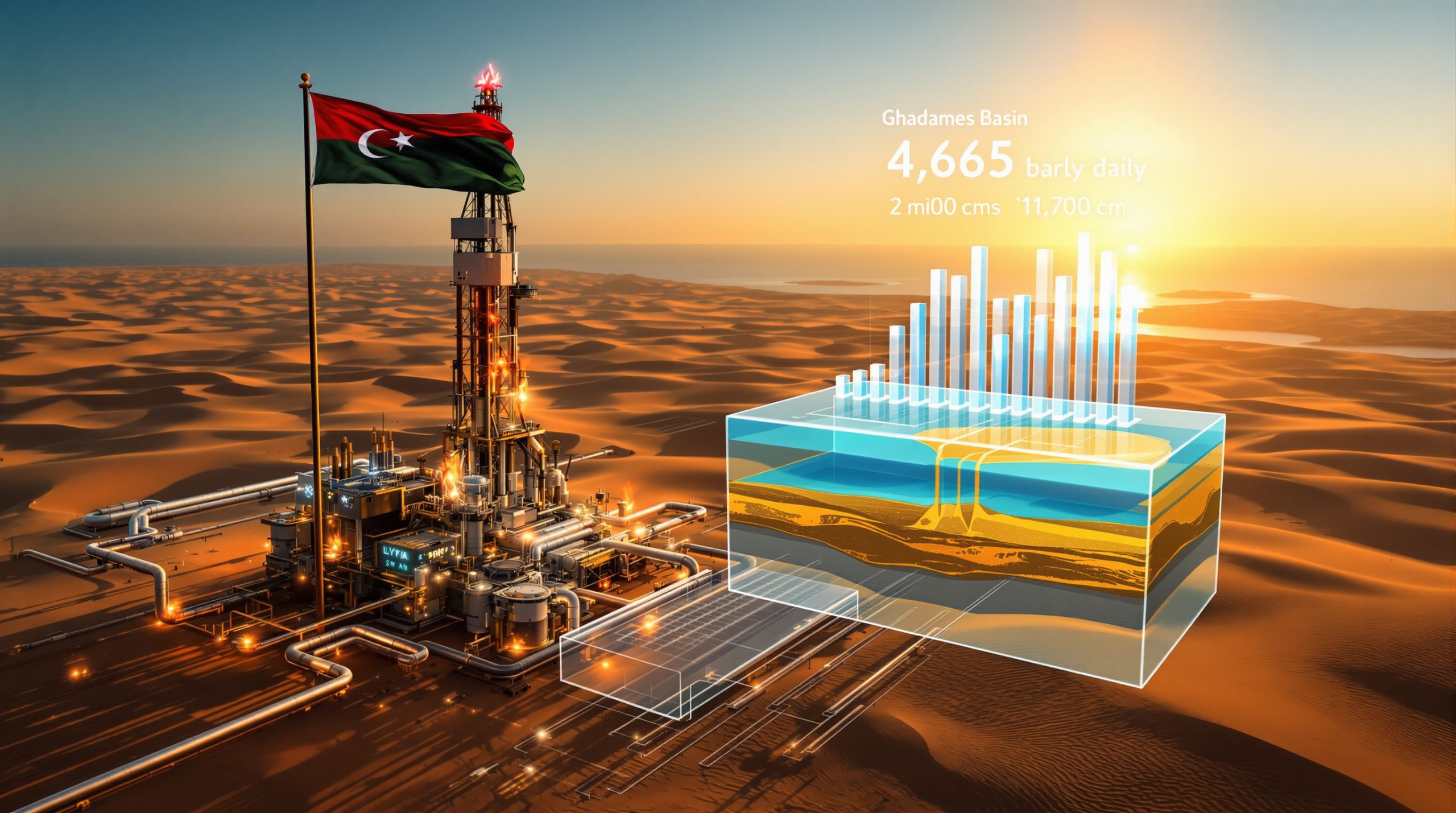How is Mining Shaping the DRC's Economic Future?
The Democratic Republic of Congo stands at a pivotal moment in its development journey, with mining serving as the cornerstone of its economic transformation. Over the past decade, the country has witnessed significant mining expansion, particularly in copper-rich regions, creating a foundation for broader economic prosperity and diversification.
Mining currently contributes approximately 25% to the DRC's GDP, making it the primary engine of economic growth. This sector has experienced an average annual growth rate of 7.2% since 2015, outpacing overall economic growth and positioning the country as a critical global supplier of cobalt, copper, and other strategic minerals.
"Mining, as a foundation sector in the economy of the Democratic Republic of Congo, is now reliant for its future growth and positive broader impacts on an enabling ecosystem," notes a recent industry report from Mining Review Africa (August 6, 2025). This highlights the critical relationship between building DRC's sustainable foundation from mining and infrastructure investment.
The Mining-Infrastructure Connection
Mining operations require extensive supporting systems to function efficiently, from transportation networks to energy solutions. In the DRC, this infrastructure development is creating a foundation that can support broader economic growth beyond the mining sector itself.
The infrastructure needs of mining operations extend far beyond the mine sites themselves. Each new mining project creates demand for:
- Transportation networks for moving materials and products
- Reliable power generation and distribution
- Water management systems
- Communication networks
- Community facilities including housing, schools, and healthcare centers
This demand for infrastructure development represents both a challenge and an opportunity for the DRC's economic future.
Current State of Mining Development
The DRC's mining expansion trajectory is expected to continue, driven by global demand for critical minerals and energy essential to the green energy transition. The country holds:
- Over 70% of the world's cobalt reserves
- Significant copper deposits in the Copper Belt region
- Substantial reserves of coltan, diamonds, gold, and other valuable minerals
"This central region of Africa is set to deliver enormous opportunity, which can be fostered if well planned and designed infrastructure is put in place," according to Mining Review Africa (August 2025). This potential can only be fully realized through strategic infrastructure development that connects mining operations to global markets while supporting local communities.
What Infrastructure is Needed to Support Mining Growth?
The DRC's mining sector faces significant infrastructure challenges that must be addressed to unlock its full potential. "The range of infrastructure – from roads and rail to energy and water facilities – is essential to facilitating logistics and trade in the DRC, paving the way not only for mining's growth but for the blossoming of other industries," notes Mining Review Africa (August 2025).
This infrastructure deficit represents both a challenge and an opportunity. While inadequate transportation, energy, and water systems currently constrain mining operations, investments in these areas can create the foundation for broader economic development.
Transportation Networks: The Lifeline of Mining
Mining operations in the DRC's interior face significant logistical challenges in moving materials and products. The country's vast size (approximately 2.3 million square kilometers) combined with challenging terrain makes transportation infrastructure development critical to economic growth.
Road and Rail Development
The Lobito Corridor represents one of the most significant infrastructure projects underway in the region. This transportation route connects the copper belt centers of Ndola, Chingola, Lubumbashi, and Kolwezi to Angola's Atlantic port of Lobito, creating a vital export pathway for minerals.
This corridor development includes:
- Rehabilitation of over 1,300 kilometers of railway
- Road improvements along parallel routes
- Border crossing facilities and customs modernisation
- Intermodal transfer facilities at key points
The estimated $2.1 billion investment in the Lobito Corridor is expected to reduce transportation costs by 30-40% while cutting transit times by half, dramatically improving the competitiveness of DRC mining operations.
Port Facilities and Logistics Hubs
Efficient port access is crucial for the DRC's landlocked mining regions. Beyond the Lobito connection, developing additional logistics hubs can further enhance the country's ability to participate in global trade.
Key projects include:
- Expansion of port handling facilities at Matadi on the Congo River
- Development of specialised mineral handling terminals
- Establishment of inland container depots in mining regions
- Implementation of digital logistics management systems
These investments would reduce shipping costs and times while improving reliability—critical factors for maintaining competitiveness in global mineral markets.
Energy Infrastructure: Powering Mining Operations
Mining is energy-intensive, with large operations requiring 50-200 MW of reliable power. The DRC's power infrastructure currently falls short of these needs, with national generation capacity of approximately 2,500 MW serving a population of over 90 million people.
Hydroelectric Potential
The DRC possesses substantial water resources that present opportunities for hydroelectric power development. "The available surface water resources present the opportunity for hydro-electric power supply schemes to be developed or refurbished, providing a key source of power for the country," notes Mining Review Africa (August 2025).
The country's technical hydroelectric potential exceeds 100,000 MW, of which less than 3% has been developed. Key projects include:
- Rehabilitation of existing facilities at Inga I and II
- Development of new mid-sized hydroelectric plants (20-100 MW)
- Mini-hydro installations for localised supply
- Transmission network expansion to connect generation to mining areas
Renewable Energy Integration
"There is also the need for green energy to support mining development in the DRC," according to industry experts (Mining Review Africa, August 2025). Solar and other renewable energy sources offer complementary power solutions, particularly in remote mining areas where grid connection may be challenging.
Renewable energy opportunities include:
- Solar installations with battery storage for mining operations
- Hybrid systems combining solar with traditional power sources
- Biomass generation using agricultural waste
- Small-scale wind power in suitable locations
Several mining companies have already implemented electrification in mining projects ranging from 5-40 MW, demonstrating the viability of these solutions while reducing environmental impact.
Water Management Systems
Effective water management is critical both for mining operations and surrounding communities. Mining processes typically require 500-2,000 cubic meters of water per hour, while also potentially impacting local water resources.
Water Supply Networks
Reliable water access is essential for mining processes, but must be balanced with community needs and environmental protection. Infrastructure needs include:
- Water storage facilities to manage seasonal availability
- Treatment plants for process water
- Distribution networks for communities
- Monitoring systems to track usage and quality
Wastewater Treatment Facilities
Proper water management infrastructure helps mitigate mining's environmental impact while protecting this vital resource for agricultural and community use. Advanced wastewater treatment systems can remove contaminants and allow water recycling, reducing both environmental impact and operational costs.
How Are International Standards Raising the Bar for Mining Operations?
As the DRC's mining sector integrates more deeply with global markets, international standards are increasingly shaping operations. "As more international financial institutions and investors are drawn into this economy, there is an increased expectation to meet global sustainability standards, responsible mining standards and lenders' environmental and social safeguards," according to Mining Review Africa (August 2025).
This trend represents a significant shift from purely compliance-focused approaches toward proactive adoption of best practices. Mining companies operating in the DRC now face higher expectations from:
- International investors and lenders
- Global customers and supply chain partners
- Local communities and civil society organisations
- Host government agencies implementing reformed regulations
Environmental Compliance Beyond National Regulations
The evolution of environmental standards in the DRC mining sector reflects global movements toward greater sustainability and responsibility in resource extraction.
Adoption of Global Standards
More mining operations in the DRC are aligning with international frameworks like the Copper Mark, which promotes responsible and sustainable copper sourcing. "More local mines are extending their compliance beyond national regulations and aligning to the Copper Mark, to promote sustainable and responsible sourcing of copper," notes Mining Review Africa (August 2025).
The Copper Mark requires adherence to 32 criteria across environmental, social, and governance aspects of operations, including:
- Greenhouse gas emissions management
- Biodiversity protection
- Water stewardship
- Community engagement
- Human rights protections
This shift represents a significant step toward more responsible resource development, with approximately 30% of major copper operations now pursuing certification.
Environmental Impact Assessment Requirements
As international financial institutions increase their involvement in the DRC's mining sector, expectations for comprehensive environmental impact assessments have risen accordingly. These assessments now typically include:
- Detailed baseline studies covering multiple seasons
- Consideration of cumulative impacts from multiple operations
- Quantitative analysis of ecosystem services
- Climate change vulnerability assessments
- Biodiversity offset planning
Meeting these requirements demands specialised expertise and significant investment, but yields better project designs and reduced long-term risks.
Tailings Storage Facility Management
Mine tailings management represents one of the highest-risk aspects of mining operations, with potential for catastrophic failures if not properly designed and managed.
Global Industry Standard on Tailings Management (GISTM)
The adoption of GISTM by DRC mining operations demonstrates a commitment to safer tailings management practices, reducing environmental and community risks. "The Copper Mark requires that tailings management lines up with widely supported good practice guidelines, such as the Global Industry Standard on Tailings Management," according to Mining Review Africa (August 2025).
The GISTM includes six key components:
- Affected communities engagement
- Integrated knowledge base development
- Risk assessment and management
- Change management procedures
- Emergency preparedness and response
- Public disclosure and accountability
Implementation of these standards significantly reduces the risk of catastrophic failures while improving overall environmental performance.
Engineering and Disaster Management Expertise
Implementing these standards requires specialised services in tailings engineering, environmental management, and disaster preparedness—creating additional opportunities for technical skill development. According to industry experts, implementation requires "specialised services beginning with tailings engineering and extending to environmental, social and governance (ESG) and disaster management" (Mining Review Africa, August 2025).
This growing demand for specialised expertise is creating opportunities for:
- Technical training programs in relevant disciplines
- Development of local consulting capabilities
- Knowledge transfer through international partnerships
- Research collaborations with academic institutions
What Geotechnical Challenges Must Be Addressed?
The DRC's unique geology presents specific technical challenges that must be addressed through specialised approaches to infrastructure development. These challenges affect not only mining operations but also the supporting infrastructure needed for economic growth.
Unique Ground Conditions in the DRC
The geology of the DRC's mining regions presents specific technical challenges requiring specialised assessment and management approaches.
Karst Ground Considerations
"In the DRC, the geotechnical challenges are heightened by the associated presence of karst ground – presenting unique risks in terms of ground stability, given that sinkholes and subsidence are associated with karst ground," explains Dominique Sambwa, chairman of SRK Congo (Mining Review Africa, August 2025).
Karst formations in the DRC mining regions are characterised by:
- Extensive underground cavity systems
- Irregular bedrock surfaces
- Variable soil cover thickness
- Unpredictable groundwater flow patterns
- Potential for sudden collapse
These conditions require thorough assessment during infrastructure development using specialised techniques such as:
- Ground-penetrating radar surveys
- Electrical resistivity tomography
- Extensive borehole investigations
- Microgravity surveys
- Detailed hydrological modeling
Dewatering Impacts on Ground Stability
Mining operations often require extensive dewatering to access mineral resources, which can have significant impacts on ground stability. "The risk is also amplified in areas where mines conduct extensive and continuous dewatering, as this may trigger sinkholes when the stability of cavities are affected by lowered groundwater levels," notes Mining Review Africa (August 2025).
Mitigating these risks requires:
- Comprehensive hydrogeological modeling
- Continuous monitoring of groundwater levels
- Controlled dewatering approaches
- Ground reinforcement in high-risk areas
- Emergency response planning for subsidence events
Infrastructure Risk Assessment
The geotechnical challenges present in the DRC have significant implications for infrastructure development, requiring specialised approaches to ensure safety and longevity.
Roads and Railways
Transportation infrastructure must be designed with consideration for these geotechnical risks, requiring specialised investigations and engineering solutions. According to experts, these risks extend to "public infrastructure such as roads, highways and rail lines" (Mining Review Africa, August 2025).
Design considerations include:
- Enhanced subgrade preparation techniques
- Geosynthetic reinforcement layers
- Drainage systems to manage water infiltration
- Monitoring systems for early detection of instability
- Maintenance protocols specific to karst environments
Renewable Energy Facilities
Even solar installations and other renewable energy projects require proper geotechnical assessment to ensure long-term stability and safety. These facilities often cover large areas and can be particularly vulnerable to differential settlement and subsidence.
Specialised approaches include:
- Detailed site investigations prior to facility placement
- Customised foundation designs based on subsurface conditions
- Drainage controls to minimise water infiltration
- Monitoring systems integrated with facility components
- Modular designs that can accommodate minor ground movements
How Can Water Resources Be Protected While Supporting Development?
Water management represents one of the most critical aspects of sustainable mining development in the DRC. The country's abundant water resources must be carefully managed to support both mining operations and the needs of local communities.
Water Stewardship Approaches
Effective water stewardship requires a comprehensive approach that considers the needs of all stakeholders and protects both water quantity and quality.
Community Water Access Protection
"Around mines in the DRC, for instance, about 90% of settlements are informal – where communities rely on subsistence farming (agriculture and fisheries) with water from rivers, shallow hand-dug wells and boreholes," notes Mining Review Africa (August 2025). This high dependency on natural water sources makes communities particularly vulnerable to mining impacts.
Protecting community water access requires:
- Comprehensive baseline studies of existing water sources
- Predictive modeling of potential mining impacts
- Development of alternative water supplies where necessary
- Water quality protection measures
- Community engagement in water management decisions
Mining companies increasingly recognize that protecting community water resources is not only an ethical requirement but also critical for maintaining their social license to operate.
Environmental Monitoring Networks
"What we have seen in the DRC are cases of reduced water availability or contamination of both surface water and groundwater. Mines must proactively guard against this risk through a robust environmental monitoring network," states Wouter Jordaan, Principal Environmental Scientist (Mining Review Africa, August 2025).
Effective monitoring systems typically include:
- Continuous flow measurement at key surface water points
- Regular groundwater level monitoring in observation wells
- Automated water quality sampling stations
- Sediment transport monitoring
- Biological indicators of ecosystem health
Data from these systems enables early detection of potential issues and supports adaptive management approaches that minimise impacts.
Balancing Mining and Agricultural Needs
Mining and agriculture often compete for the same water resources, making integrated water management essential for sustainable development.
Food Security Considerations
Economic development must include agricultural sustainability to ensure food security alongside mineral extraction. In many mining regions of the DRC, subsistence agriculture remains the primary livelihood activity, with approximately 70% of the population dependent on farming.
Strategies for protecting agricultural water needs include:
- Seasonal water allocation planning
- Development of efficient irrigation systems
- Water storage facilities to capture wet season flows
- Drought contingency planning
- Agricultural extension services to improve water efficiency
Collaborative Water Management
A holistic approach to water management involves engaging with all stakeholders in each catchment to ensure equitable resource allocation. Successful models include:
- Catchment management committees with diverse representation
- Transparent data sharing among all water users
- Joint problem-solving approaches for water challenges
- Coordinated infrastructure development
- Shared emergency response protocols
"Dewatering often impacts on the region's water system and water availability to communities, and the risk of water contamination demands stringent water management strategies," notes Mining Review Africa (August 2025), highlighting the importance of collaborative approaches.
What Benefits Can Infrastructure Development Bring Beyond Mining?
While mining serves as the initial driver for infrastructure development in the DRC, these investments can catalyse broader economic transformation when strategically planned and implemented with modern mine planning approaches.
Economic Diversification Opportunities
Infrastructure developed primarily for mining can serve as the foundation for diversifying the DRC's economy, reducing dependency on resource extraction and creating more sustainable growth patterns.
Supporting Agricultural Growth
Well-planned infrastructure can benefit farming communities by improving market access and irrigation capabilities. Transportation networks that connect mining regions can simultaneously open new markets for agricultural products, allowing farmers to:
- Access larger urban markets with higher-value products
- Reduce post-harvest losses through faster transportation
- Obtain agricultural inputs more reliably
- Develop cold chain capabilities for perishable goods
- Participate in export markets for specialty products
Energy infrastructure can power irrigation systems, processing facilities, and cold storage, dramatically increasing agricultural productivity and value addition.
Enabling New Industries
Transportation and energy infrastructure developed for mining can facilitate the growth of manufacturing and service sectors, creating a more balanced economy. "It is not only mining that will benefit from these investments, but the regional economy as a whole – opening doors for other sectors to flourish," according to Mining Review Africa (August 2025).
Potential growth areas include:
- Mineral processing and beneficiation
- Agricultural processing and packaging
- Construction materials manufacturing
- Hospitality and tourism services
- Logistics and transportation
Ready to Catch the Next Major Mineral Discovery?
Discovery Alert's proprietary Discovery IQ model instantly notifies investors of significant ASX mineral discoveries, transforming complex mineral data into actionable investment insights that give you a market-leading edge. Explore why major mineral discoveries can lead to substantial returns by visiting Discovery Alert's dedicated discoveries page and begin your 30-day free trial today.




